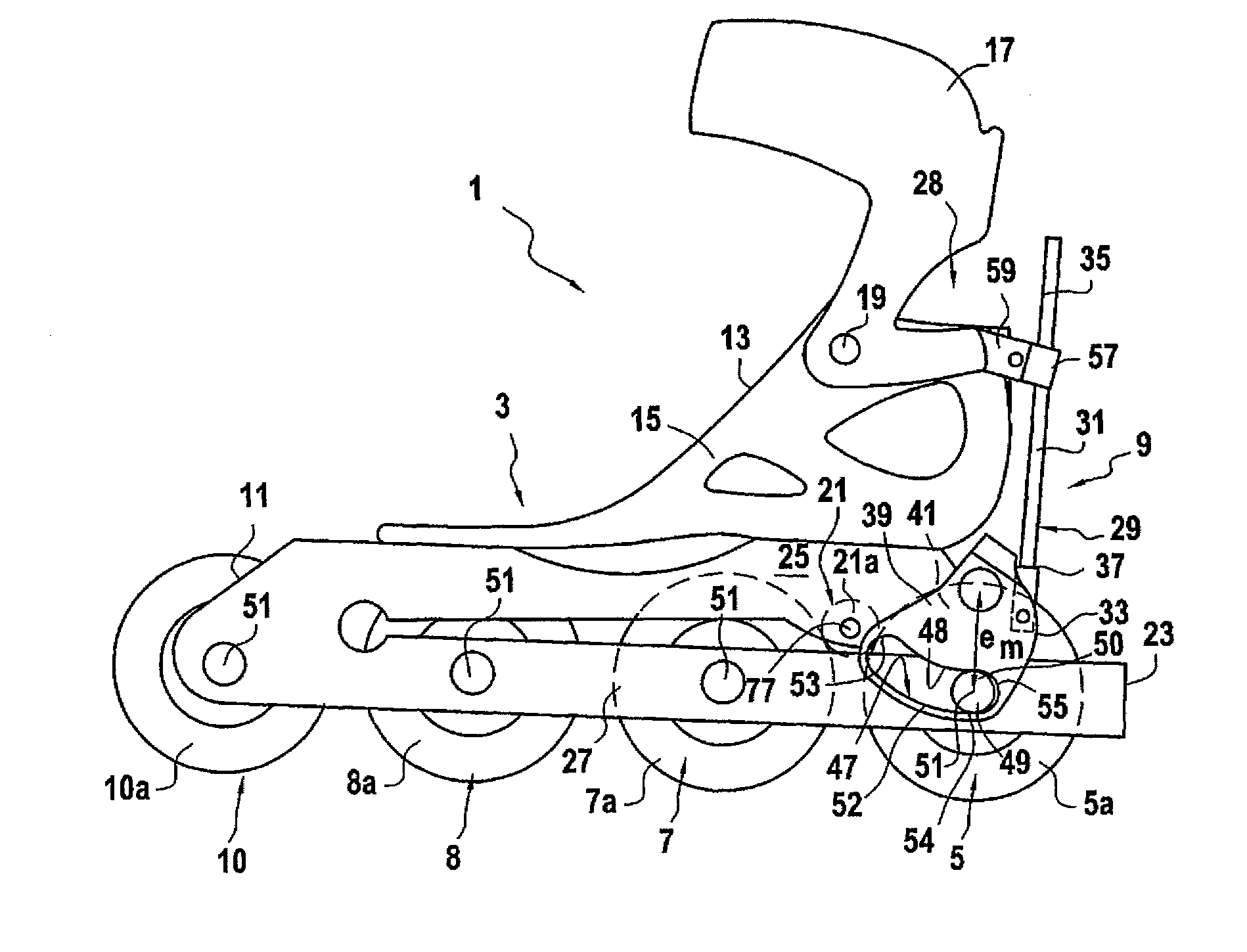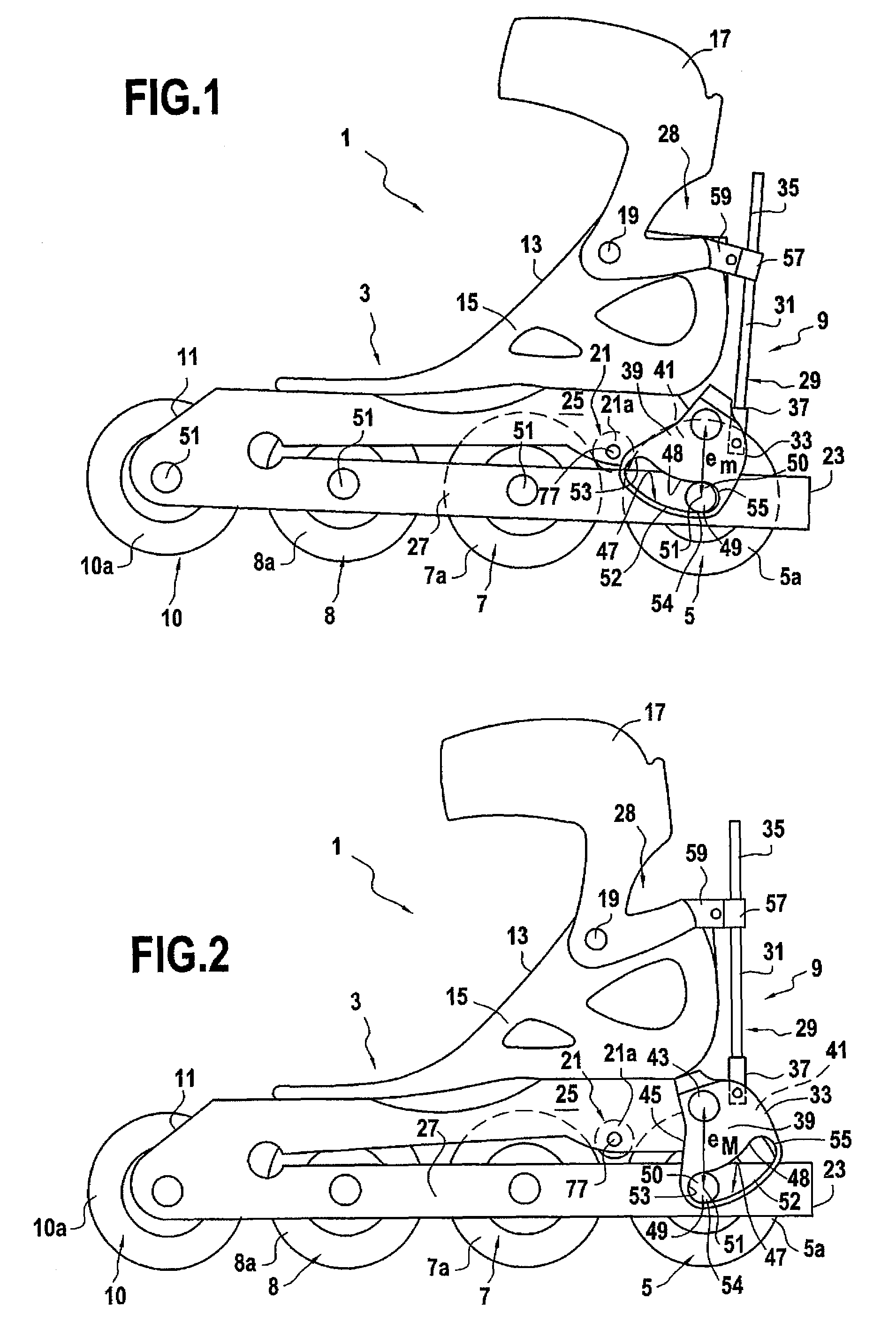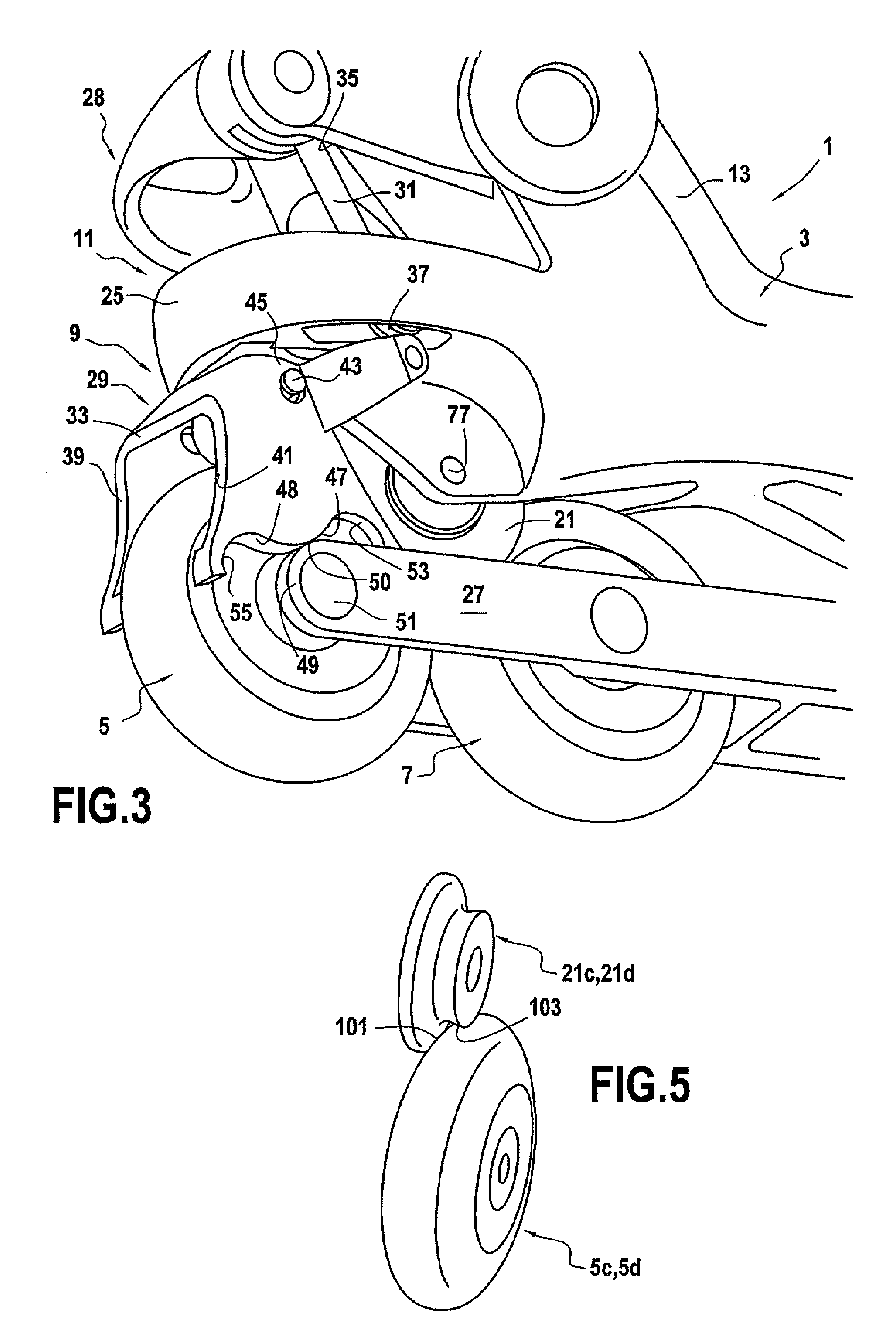Roller skate braking system
a braking system and roller skate technology, applied in the field of roller skates, can solve the problems of user risk, user is not optimal, risk of falling, etc., and achieve the effect of reducing the effectiveness of braking, avoiding any forward unbalance, and self-control of braking
- Summary
- Abstract
- Description
- Claims
- Application Information
AI Technical Summary
Benefits of technology
Problems solved by technology
Method used
Image
Examples
Embodiment Construction
[0022]According to the different design embodiments of the present invention, as illustrated in FIGS. 1-4, the roller blade 1 is equipped with a frame 3 which comprises a longitudinal plate 11. This longitudinal plate 11 consists of two portions 25, 27; the first portion 25 is said to be “fixed” in the following description, while the second portion 27 is said to be “mobile”. However said first portion 25 may be considered as mobile and said second portion 27 as fixed.
[0023]According to the design embodiment illustrated in FIGS. 1 and 2, the longitudinal plate 11 is slit over a portion of its length, from its rear end 23. With such a slit on the plate 11, it is possible to form the fixed portion 25 and the mobile portion 27. Additionally, the material selected for making the plate 11 notably designed in a composite material, allows elastic deformation of said plate 11 in order to allow the fixed portion 25 and mobile portion 27 to move closer to each other. This slit is preferably m...
PUM
 Login to View More
Login to View More Abstract
Description
Claims
Application Information
 Login to View More
Login to View More - R&D
- Intellectual Property
- Life Sciences
- Materials
- Tech Scout
- Unparalleled Data Quality
- Higher Quality Content
- 60% Fewer Hallucinations
Browse by: Latest US Patents, China's latest patents, Technical Efficacy Thesaurus, Application Domain, Technology Topic, Popular Technical Reports.
© 2025 PatSnap. All rights reserved.Legal|Privacy policy|Modern Slavery Act Transparency Statement|Sitemap|About US| Contact US: help@patsnap.com



